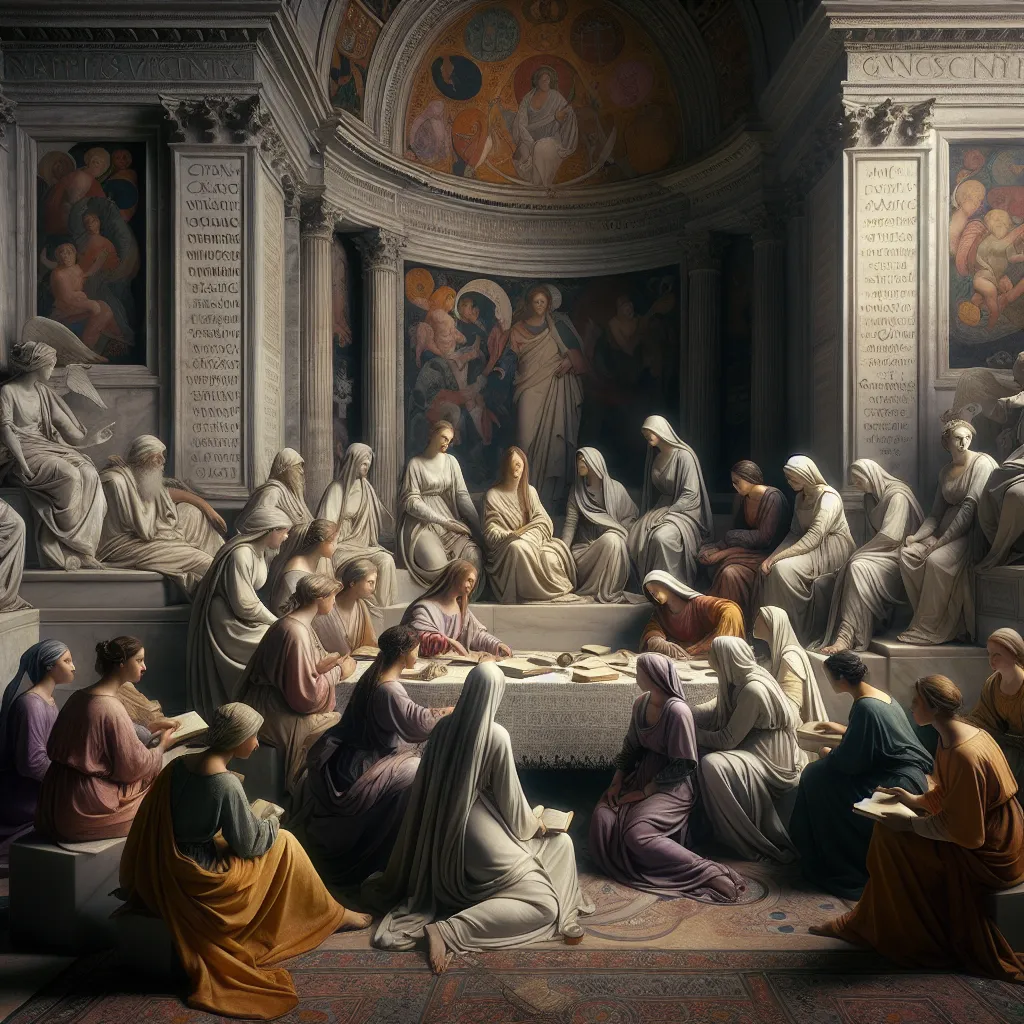
- Published on
- Authors

- Name
- You
The Role of Women in Gnosticism: Sacred Voices Unveiled
In the labyrinthine corridors of historical and mystical thought, the role of women in Gnosticism stands as a beacon of divine wisdom and spiritual empowerment. The Gnostic traditions, often shrouded in esoteric symbology and secretive lore, elevate women to revered positions, acknowledging their immense spiritual and metaphysical contributions. Let us embark on a journey to uncover the profound roles of key female figures like Mary Magdalene and Sophia within these mystical communities.
Table of Contents
- [Introduction](#i ntroduction)
- [Mary Magdalene: The Apostle of Apostles](#m ary-magdalene-the-apostle-of-apostles)
- [Sophia: The Embodiment of Divine Wisdom](#s ophia-the-embodiment-of-divine-wisdom)
- [Women in Gnostic Texts](#w omen-in-gnostic-texts)
- [Conclusion](#c onclusion)
Introduction
Gnosticism, a collection of ancient religious ideas and systems, emerged in the early centuries of the Common Era. Its practitioners sought gnosis (knowledge), particularly a direct, personal knowledge of the divine. Unlike many orthodox practices, Gnosticism placed significant emphasis on the spiritual roles and statuses of women, elevating them as key figures within its doctrine.
In Gnostic literature, Mary Magdalene is not merely a follower of Jesus but is portrayed as his most intimate disciple and confidant. The Gospel of Mary, a Gnostic text, presents her as a visionary endowed with profound understanding and spiritual insight. Unlike her portrayal in canonical texts, where her presence is often marginalized, the Gnostic Mary Magdalene is a transmitter of esoteric wisdom, a figure of enlightenment and spiritual authority.
Key Insights from the Gospel of Mary:
| Chapter | Content & Revelations |
|---|---|
| 1 | Mary consoles the apostles, providing teachings about the soul's journey. |
| 2 | She describes visions and the ascent of the soul through celestial realms. |
| 3 | Confronts Peter, advocating for the inclusion and respect of women's spiritual insights. |
Sophia, a central figure in Gnostic cosmology, personifies divine wisdom. She plays a pivotal role in the creation mythologies, where her fall from the Pleroma (fullness of divine presence) leads to the material world's inception. However, her journey doesn't end in despair. Sophia's story is one of redemption and restoration, symbolizing the return to divine knowledge and enlightenment.
The Dual Nature of Sophia:
- Lower Sophia: Represents the fragmented wisdom that has fallen into the material realm.
- Higher Sophia: Embodies pure, unblemished divine wisdom, aiding in the soul's ascension back to the Pleroma.
Women in Gnostic Texts
Beyond Mary Magdalene and Sophia, Gnostic scriptures are replete with prominent female figures who underscore the tradition's inclusive spirit.
Table of Prominent Female Figures in Gnostic Texts:
| Name | Role and Significance |
|---|---|
| Eve | Seen as a bearer of secret knowledge, not simply a sinner. |
| Norea | Defies patriarchal deities, embodying resistance and enlightenment. |
| Prunikos | Synonymous with Sophia, illustrating her struggle and redemption. |
Conclusion
The Gnostic reverence for female figures such as Mary Magdalene and Sophia paints a picture of a tradition that acknowledges and venerates the divine feminine's power. These women's roles defy the subservient archetypes often imposed by patriarchal narratives, portraying them as pillars of wisdom, strength, and spiritual authority.
In recognizing their contributions, we not only honor the mystical traditions of the past but also pave the way for a more inclusive and enlightened understanding of spirituality in our time.
Enlightened and intrigued? Join the discussion and delve deeper into the mystical realms where the divine feminine reigns supreme!
